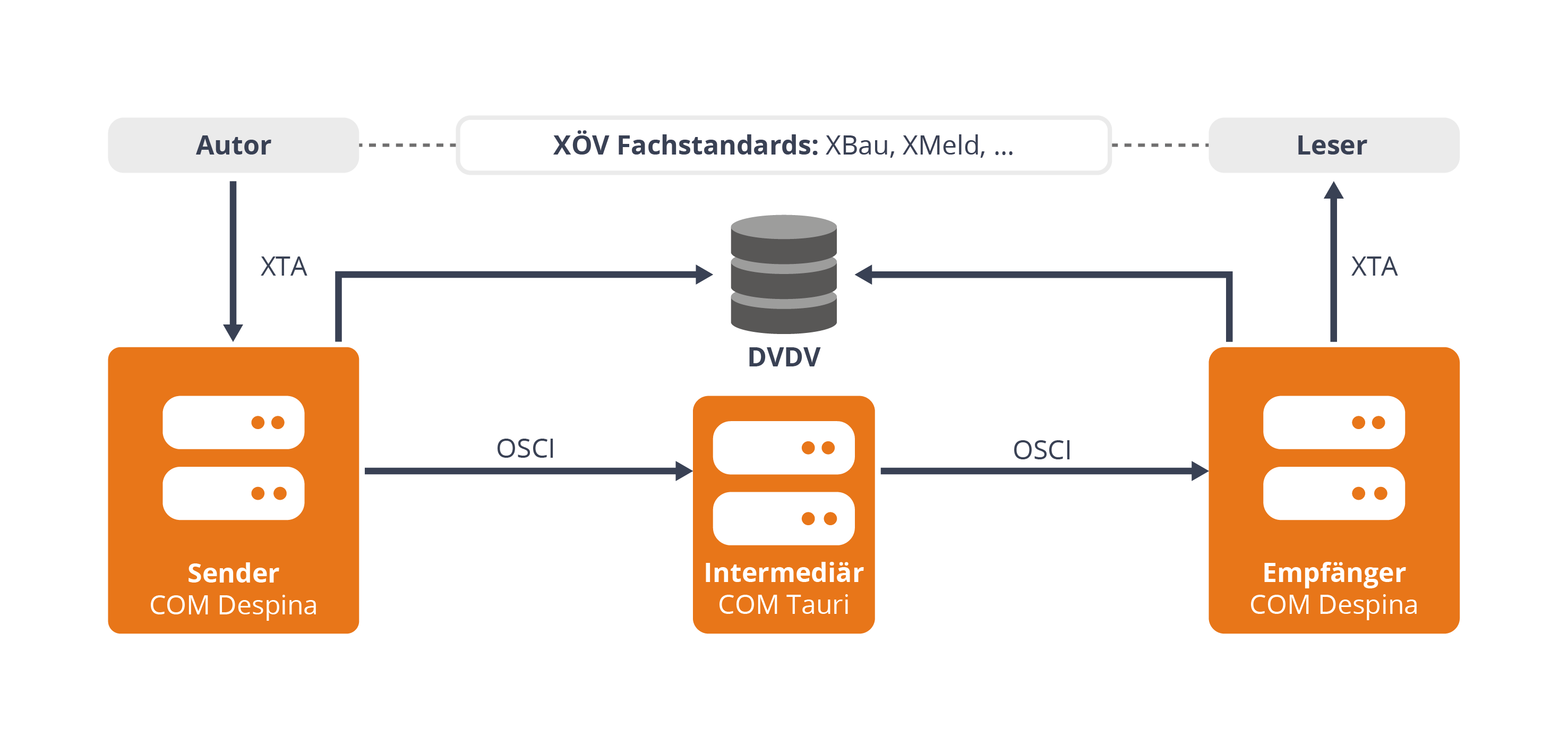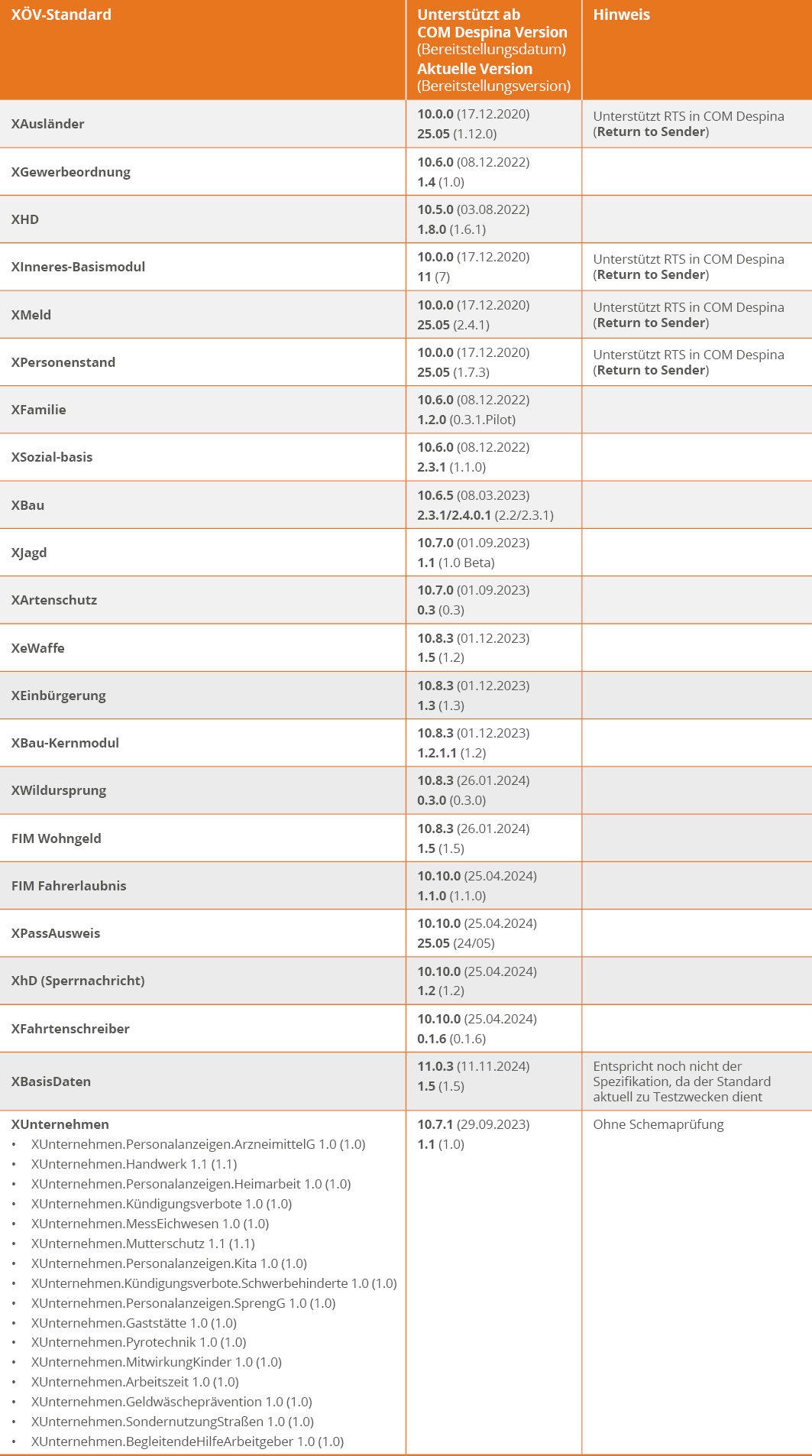In complex e-government applications, it can make sense to separate specialist procedures from transport procedures. This is where XTA comes into play: XTA stands for "XML in Public Administration Transport Adapter". Consequently, an XTA message is nothing more than an XML file. Fixed message structures are required so that the exchange of messages between authorities can be automated. These message structures, the XÖV standards, are regularly maintained by the KoSIT (Coordination Office for IT Standards), for example, with the help of expert committees on behalf of the specialist ministerial conferences. The aim of the standards is to enable smooth data exchange between IT procedures from different manufacturers in a close technical context.
The mandatory use of certain XÖV standards results from legislation or resolutions of the IT Planning Council.
COM Despina DVDV/OSCI Edition provides access to data transmission via OSCI and DVDV, based on XÖV standards, for specialist procedures of public authorities. Thanks to the XTA web service interface, COM Despina DVDV/OSCI Edition realizes data exchange between specialist and transport procedures, regardless of the communication protocols used during transport.













